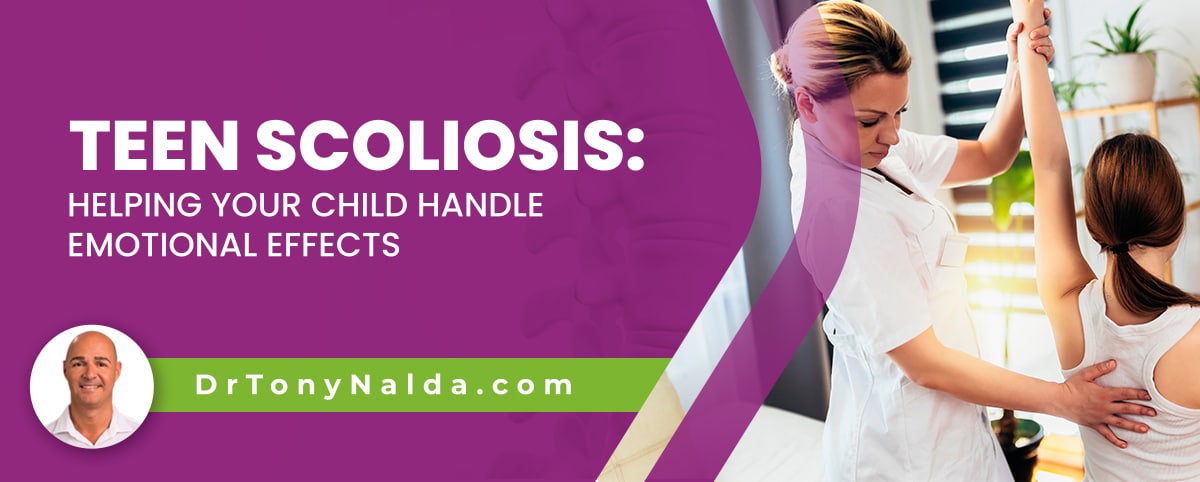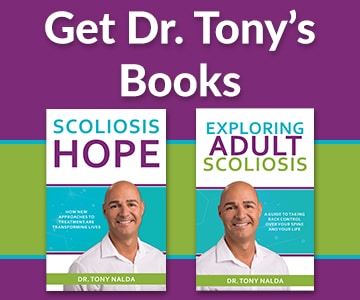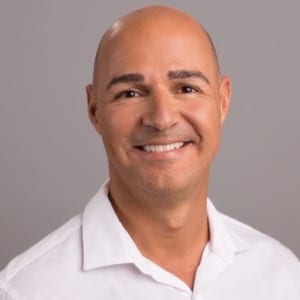Teen Scoliosis: Helping Your Child Handle Emotional Effects

Adolescent idiopathic scoliosis is the most common type of scoliosis and is diagnosed in patients between the ages of 10 and reaching skeletal maturity. Adult scoliosis is diagnosed once growth has stopped.
Too often, the emotional health of patients is under-valued in the effort to address a condition's physical symptoms. As the main symptom of teen scoliosis involves postural changes that make them look different and walk differently, negative self image and self esteem issues are common.
When it comes to helping a teen through a recent scoliosis diagnosis, having an open dialogue is important, as is being mindful about what's said and advice that's given by loved ones.
Table of Contents
How is Teen Scoliosis Diagnosed?
Scoliosis causes the spine to develop an unhealthy spinal curvature that bends to the side and rotates, making it a 3-dimensional condition.
Scoliosis affects all ages, but the most prevalent type is adolescent idiopathic scoliosis diagnosed between the ages of 10 and adulthood.
Scoliosis is diagnosed through a combined physical examination that includes taking a patient's medical and family history and performing an adams forward bend test; if the physical examination finds indicators of scoliosis, further testing is warranted in the form of a scoliosis X-ray.
An X-ray is needed to officially diagnose scoliosis: to confirm there is a rotational component and determine a patient's Cobb angle measurement.
A patient's Cobb angle is a key piece of information that treatment plans are shaped around and a minimum Cobb angle of 10 degrees is needed to be considered a true scoliosis.
Cobb angle determines condition severity: mild scoliosis, moderate scoliosis, severe and very severe scoliosis.
The more severe a condition is, the more noticeable its effects are likely to be, including emotional effects.
Let's take a look at the different condition characteristics that are most capable of having an emotional impact.
Scoliosis is Progressive
Being diagnosed with any unexpected medical condition is stressful, but being diagnosed with an incurable progressive condition can be particularly difficult news to process.
Scoliosis is a progressive condition, meaning its nature is to get worse over time, and as a progressive condition, treatment is about managing an ongoing condition.
For young patients in particular, it can be difficult to comprehend the news that their condition is virtually guaranteed to get worse at some point, and as progression is triggered by growth, adolescents are the most at risk for rapid-phase progression due to the stage of puberty and its rapid and unpredictable growth spurts.
So where scoliosis is at the time of diagnosis doesn't mean that's where it will stay, not without the help of proactive treatment that counteracts the condition's progressive nature.
Knowing the condition's effects are likely to become more noticeable over time is difficult for a young person to process, and this can cause mental health issues related to anxiety and stress.
Teens with scoliosis need to know they are supported throughout their entire scoliosis journey, from the time of diagnosis to rehabilitation. Support groups are powerful tools to ensure teens with scoliosis feel heard and have an outlet to share their concerns and experiences with people who understand.
 For adolescents who get a lot of self worth and self esteem from being active in sports, a scoliosis diagnosis can be devastating news, particularly if it means a beloved sport/activity is no longer deemed safe for the patient.
For adolescents who get a lot of self worth and self esteem from being active in sports, a scoliosis diagnosis can be devastating news, particularly if it means a beloved sport/activity is no longer deemed safe for the patient.
Sport/Activity Restrictions
Each case of scoliosis is unique, including any related sports/activity restrictions.
While there was a time when the place of exercise was questioned for scoliosis patients, but we have since learned that exercise is not only important for its corrective benefits, but also its positive effects on mental health.
Imagine a school's football start is an adolescent boy dealing with a recent diagnosis, and naturally, a primary concern is what he will and won't be able to continue doing in his sport.
Perhaps, that adolescent had dreams of a scholarship, a career as a professional football player; in an instant, that dream is called into question.
While activity restrictions will be case specific, in general, sports and activities that aren't deemed safe for people with scoliosis include contact sports that overuse one side of the body, place the spine in unnatural positions, and involve repeated stress from impact, so football and collision sports aren't generally recommended.
And, remember, as a progressive condition triggered by growth, scoliosis treatment is intense so activity restrictions are also about not interfering with treatment.
Injury and Strain
In situations where a patient has to stop or modify a sport or activity, finding another activity that's deemed appropriate can help.
In these types of situations, it's important to acknowledge the difficulty facing your teen, but to not lose hope; I recommend parents and caregivers being aware of the number of professional athletes and celebrities who have fulfilled their goals despite being diagnosed with scoliosis as a child.
Adolescents dealing with the loss of a beloved sport/activity are particularly vulnerable to depression, suicidal thoughts, and can turn to substance abuse as an outlet; professional help is important to prevent these types of harmful habits from developing.
When it comes to scoliosis symptoms, these can also be difficult for adolescents who tend to want to blend in and don't want to look different from their peers.
Scoliosis Changes Posture and Movement
Scoliosis is a structural spinal condition but can cause a number of effects felt throughout the body.
In children and adolescents, the main condition effects include postural changes caused by the condition's uneven forces disrupting the body's overall symmetry.
In most cases, the earliest signs of childhood scoliosis are uneven shoulders and uneven hips.
In additional postural changes that can make a teen self conscious include:
- An uneven eyeline
- Head appearing uncentered over the torso
- Uneven shoulder blades
- The development of a rib cage arch
- Arms and legs that appear to hang at different lengths
And these types of changes become more overt alongside progression.
As scoliosis progresses and becomes more severe, changes to movement are also common including gait, balance, and coordination.
Movement changes can be especially disruptive and upsetting for those into sports and activities like dance that are based on symmetrical movement.
Asymmetrical changes to a teen's posture can make them feel ashamed if the changes are out of their control and difficult to hide.
The best remedy for emotional health issues related to scoliosis is proactive treatment because positive results can be highly motivating.
Talking to Teens With Scoliosis
When it comes to talking to teens with scoliosis, the key is to remain realistic but positive.
The teenage years are known as tumultuous at the best of times, and adding the challenge of living and treating a progressive spinal condition can affect a patient's overall health, emotional health, and quality of life.
Maintaining healthy relationships with teens is important as this can minimize the psychological effects and emotional distress of a scoliosis diagnosis.
 Teens need to feel supported, but they also need to know that there is no shame in any type of emotional response they are having.
Teens need to feel supported, but they also need to know that there is no shame in any type of emotional response they are having.
So instead of trying to direct conversations away from negative thoughts and topics, listen with understanding and empathy; that way, teens will feel they have a safe place to come for all thoughts, even the most distressing ones.
Teens who feel their parents only want to hear and discuss good news are patients who will keep difficult emotions bottled up, and this can lead to mental health issues, low self esteem, and puts adolescents at an increased risk for relationship problems and substance use.
Being a soft place for an adolescent dealing with scoliosis means being as open to discuss difficult thoughts as positive ones, and if a teen seems to be struggling excessively, connecting them with more resources for professional support is important.
Conclusion
Many parents of children recently diagnosed with scoliosis have their own difficult emotions to process, and self care is important for everyone.
For teens undergoing treatment, back braces are commonly used, and this can further separate them from their peers, and in certain social situations like the locker room, having a visible back brace can further hurt a young patient's body image.
Emotional issues are most common in severe and/or atypical cases with overt postural changes, and the best way to protect a teen's emotional well being is to ensure they are getting the emotional support they need and don't feel ashamed of the changes their bodies are going through.
Proactive treatment options for scoliosis can help minimize condition effects, and medical aspects that improve due to treatment can be highly motivating for young patients who want to see results and have hope that their conditions can improve.
Here at the Scoliosis Reduction Center®, I want to support my patients throughout their scoliosis journey from the time of diagnosis to rehabilitation, and after 20+ years of addressing teen scoliosis, I've learned that proactive treatment is the best response, and treating the whole patient includes monitoring related emotional health issues.
Helping patients determine which recreational activities are appropriate for their individual scoliosis is important for helping them lead happy lives: the ultimate treatment goal.
Dr. Tony Nalda
DOCTOR OF CHIROPRACTIC
After receiving an undergraduate degree in psychology and his Doctorate of Chiropractic from Life University, Dr. Nalda settled in Celebration, Florida and proceeded to build one of Central Florida’s most successful chiropractic clinics.
His experience with patients suffering from scoliosis, and the confusion and frustration they faced, led him to seek a specialty in scoliosis care. In 2006 he completed his Intensive Care Certification from CLEAR Institute, a leading scoliosis educational and certification center.
About Dr. Tony Nalda
 Ready to explore scoliosis treatment? Contact Us Now
Ready to explore scoliosis treatment? Contact Us Now





